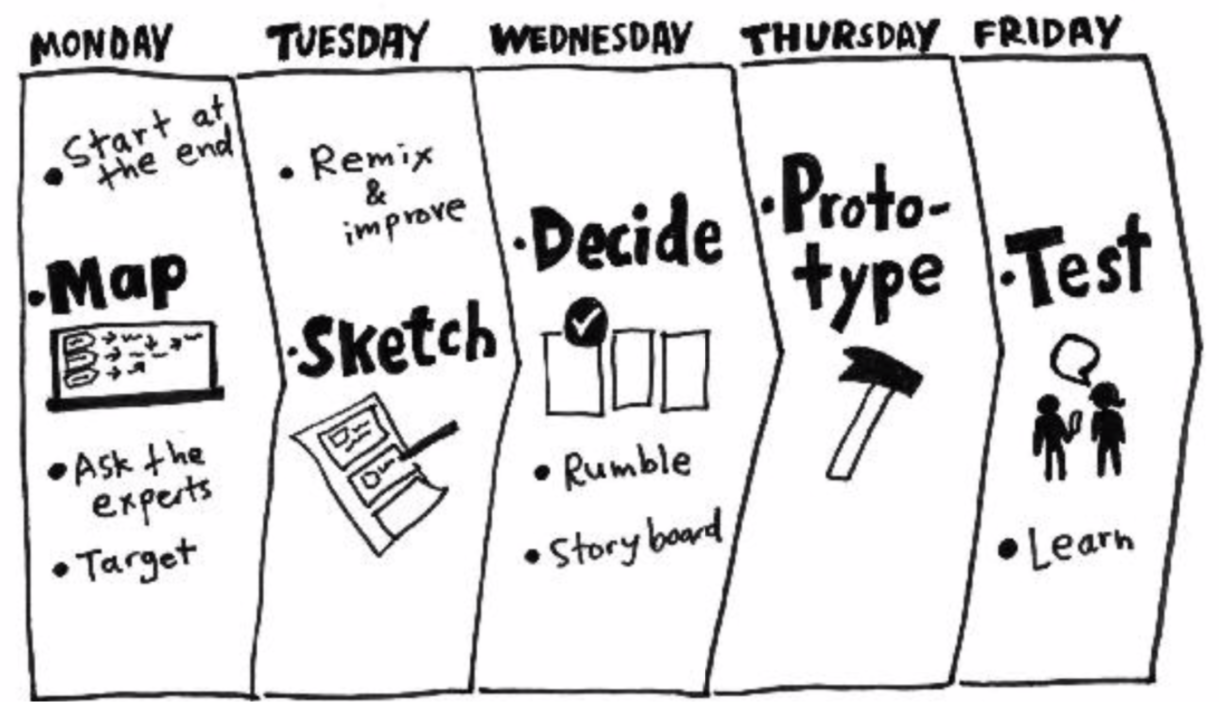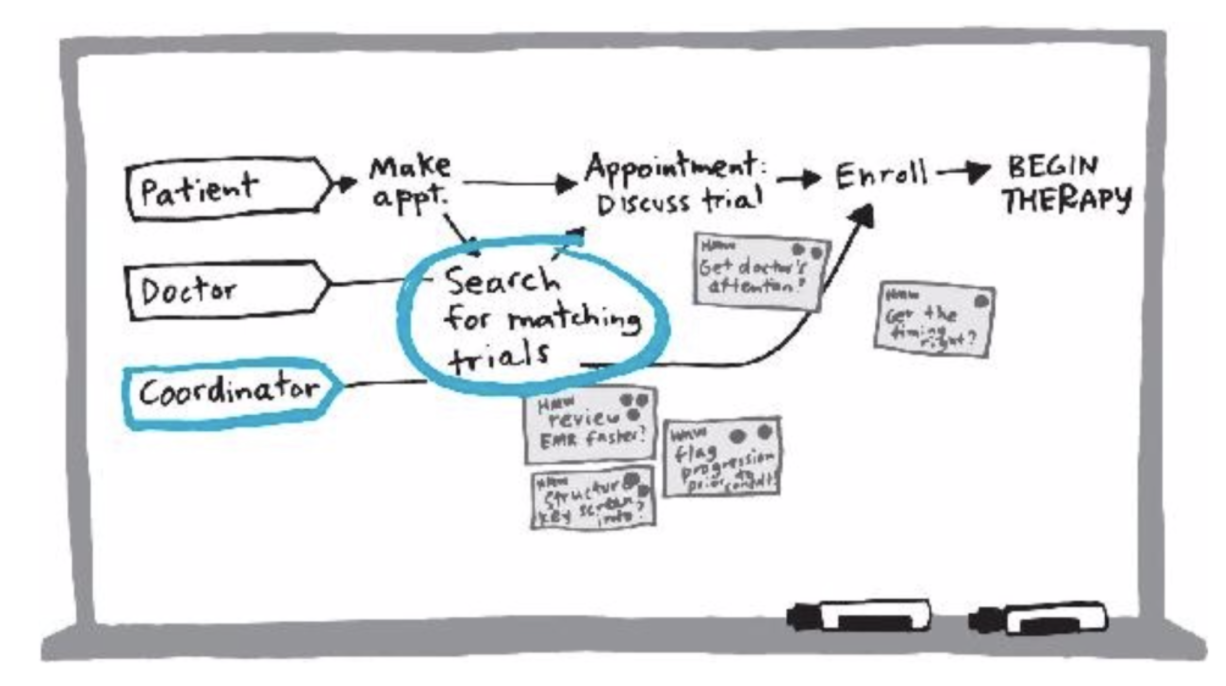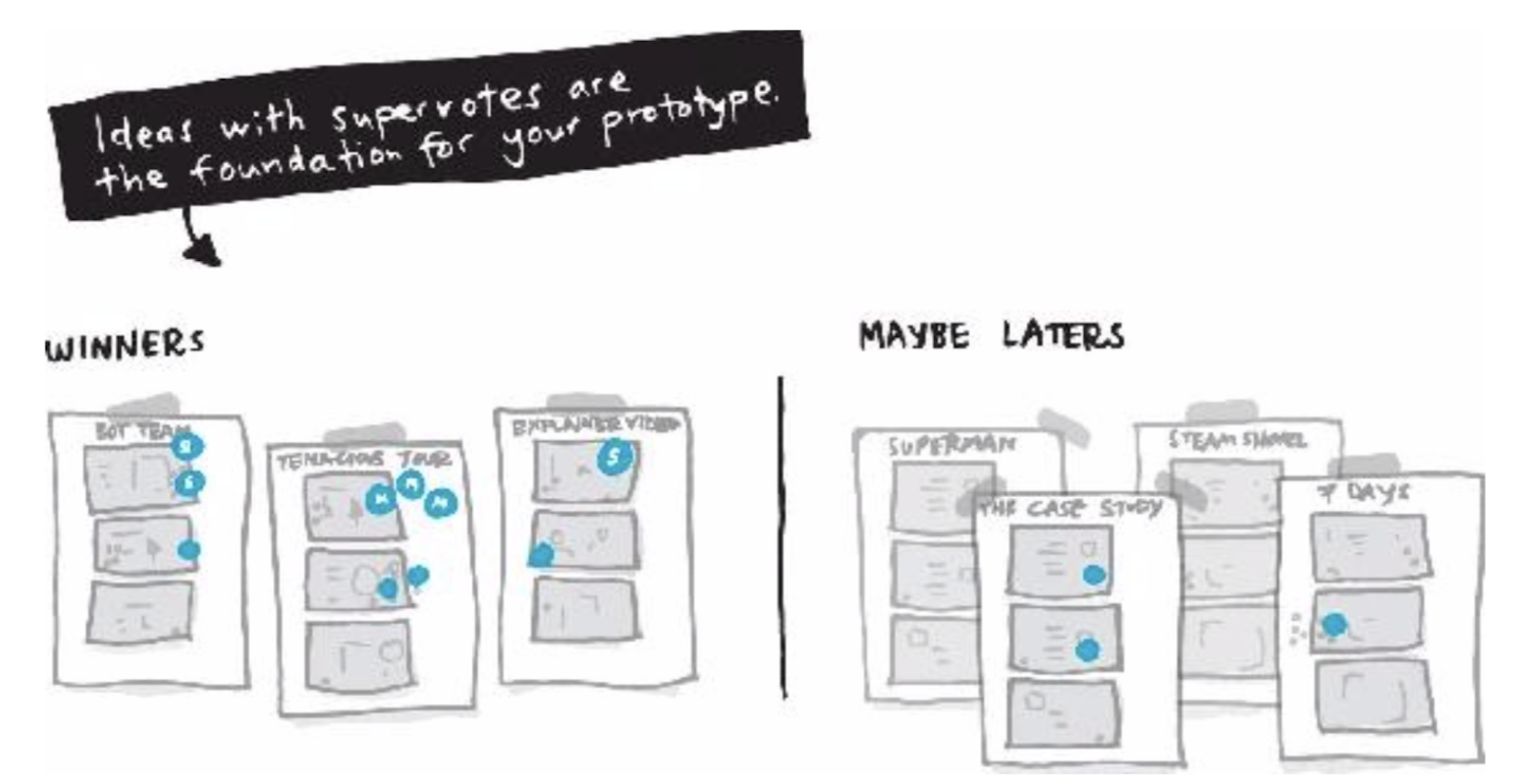What is a Design Sprint?
Its name comes from Sprint: How to Solve Big Problems and Test New Ideas in Just Five Days, a book written by Jake Knapp from Google Ventures, a company that invests in young and promising firms.
Design Sprint is a methodology that allows you to create one or several prototypes and have them tested by your final users quickly, within a period of five days. Each day of the week is dedicated to a specific phase, as we can see in the following picture:
 Taken from: Sprint by Jake Knapp (2016)
Taken from: Sprint by Jake Knapp (2016)
Do I Need a Team? Who Should I Include?
According to Jake Knapp, the ideal team size for a spring process would be 7 people or less. If more people are involved, the sprint can move slowly, and maintaining focus as well as productivity can be difficult.
Within the team, there are two vital roles that are non-negotiable:
The Decider: this is the person in charge of decision making during key moments of the project. Examples of Deciders: the CIO, a founding member, a product manager or a team leader; all of these people have enough ‘weight’ to make decisions.
The Facilitator: This is the person in charge of time management, conversations, and the process in general. The Facilitator needs to remain neutral when decisions are made, which means that this role cannot be taken on by the same person who acts as the Decider.
Additionally, it’s important to include people who will create or support the service, since they know how the product will work (developers, designers, QA), as well as experts such as finance specialists (who are aware of the financial aspects of the company), marketing specialists (who know how the company’s internal and external messages are managed), and someone who is in close contact with clients (customer service) since they will be aware of what the biggest complaints are.
Days of the Week
In this section, we will explain what happens during each day of the week:
Monday
During this day, discussions are held to pave the path for the whole week to come. First, the final objective of the whole process, mid/long term, is established. Then a list is made with all the uncomfortable questions that will need to be answered at the end of the process (such as all that can go wrong, complicated scenarios, possible blockers, etc).
The whole process is mapped out, detailing how clients will behave/move within the service or product. Interviews with experts outside the team are held so as to obtain feedback and to help create a more complete vision of what you want to achieve (fixing the map and/or changing the long term objectives if necessary).
After reviewing your mid or long term objectives, the sprint questions, the map, and notes, the team will choose a specific objective that involves a particular part of the map; this is what they will work on throughout the sprint.
 Taken from: Sprint by Jake Knapp (2016)
Taken from: Sprint by Jake Knapp (2016)
Tuesday
“On Monday, you and your team will select the problem, and additionally, will select the segment or objective to work on during the Sprint. Tuesday will focus on solutions”, says Jake Knapp.
Tuesday begins by researching ideas that have already been created and that can be used during the afternoon to inform the solution. It’s not about copying, instead, it’s all about reviewing methods and ways of making/presenting products - these could actually belong to other sectors. You can also select ideas that have already come up in the company’s history but were never executed.
Each person will select a pair of ideas and write them on the board. After this, each person will give a demonstration of their ideas for other members of the team to ask questions; all important notes will be jotted down on the same board. The final result is a board full of ideas that will transform into possible solutions.
Each person will take their time to ‘sketch’ their ideas; this is a type of cartoon workflow that explains the potential solution and how users will interact with it. The sketch is important since it’s the best way to turn ideas into solutions that can be criticized and evaluated by the rest of the team.
Wednesday
A winning sketch must be selected. The framework give us a five-step guide:
- Place all sketches on a wall.
- Heat map: everyone on the team looks at the solutions and uses stickers to mark the interesting parts.
a) If any doubts come up, these are jotted down and the note adhered. - A quick critique is made of the best elements of each solution and notes are added to capture great ideas.
a) Here, the Facilitator narrates, from their perspective, what they understand from the sketch in 3 minutes.
b) Ideas that stand out are picked, usually these are areas with the most votes.
c) Any doubts and concerns are discussed.
d) The creator speaks until the end and explains any ideas that may have been overlooked.
e) This is continued with the next sketch and the whole process is repeated. - Each person picks a solution and votes.
- The Decider has 3 super votes that they distribute to their liking and with this, the ideas that will be turned into prototypes are chosen.
 Taken from: Sprint by Jake Knapp (2016)
Taken from: Sprint by Jake Knapp (2016)
Once the ideas are selected, you move on to the storyboard where, just like a comic, the process workflow must be shown frame by frame. The more detailed the steps, the better, since this will set the guidelines for the creation of the prototype.
Thursday
On Thursday, you take on the philosophy of imitating, which transforms a storyboard into a realistic prototype. If there’s an idea that provides a great solution, instead of taking weeks, months, or years to build it, you’re going to pretend: in just one day you will create a prototype that looks real so that the next day, clients can react naturally to it.
There are four principles when creating a prototype:
- You can prototype anything. You must believe firmly in this statement.
- You build only enough to learn from, nothing more. This is just a facade with which users can interact.
- Prototypes can be discarded. This is why spending one day on them is perfect since it prevents emotional attachment to a solution.
- The prototype must seem real.
Around 3 pm, the Design Sprint framework requires a functionality test. This way, there’s still some time left to fix errors or cover up holes in the prototype. One person from the team will use the prototype while narrating.
Friday
“The week started with a great challenge and a work team, nothing more. By Friday, you already have promising solutions, the best of these have been chosen, and prototypes have been built. This would already be considered productive for a workweek,” says Jake Knapp.
A member of the team will act as the interviewer and will meet with five people, all potential clients, one at a time. Interviewees are asked to complete a task using the prototype and will be asked questions to gain a better understanding of what they are thinking while they use it. In a separate room, the rest of the team will watch a direct live video and will take notes on clients’ reactions. Only 5 interviews are held because, according to the methodology, after this number patterns are simply repeated.
The whole team observes the interviews. This speeds up the process since everyone absorbs results: conclusions will be better as a group, credibility problems will be avoided, and at the end of the day, the team will be able to make an informed decision of what they need to work on next.
Conclusions
Some final observations:
- You must review your long term objective as well as the questions that came up on Monday.
- Not all of the latter may be answered but there should be some progress.
- You can’t lose. If you managed to test your prototype with clients, you have obtained the best result: finding out in 5 days if the company’s idea is the right one.
- You can fail in ways that bring good news financially (since no resources were invested) or succeed in ways that may need to be adjusted, or you can begin a new cycle.
This framework allows you to evaluate problems and review the feasibility of possible solutions. Even in financial terms, Design Sprint can help a company to avoid economic commitments or investments without knowing the potential rate of success of an idea. However, it should also be made clear that time is needed - a team and potentially a whole workweek, which can create or discard several iterations. Design Sprint is a commitment that companies need to make, or else they can turn into the enemy of innovation.
